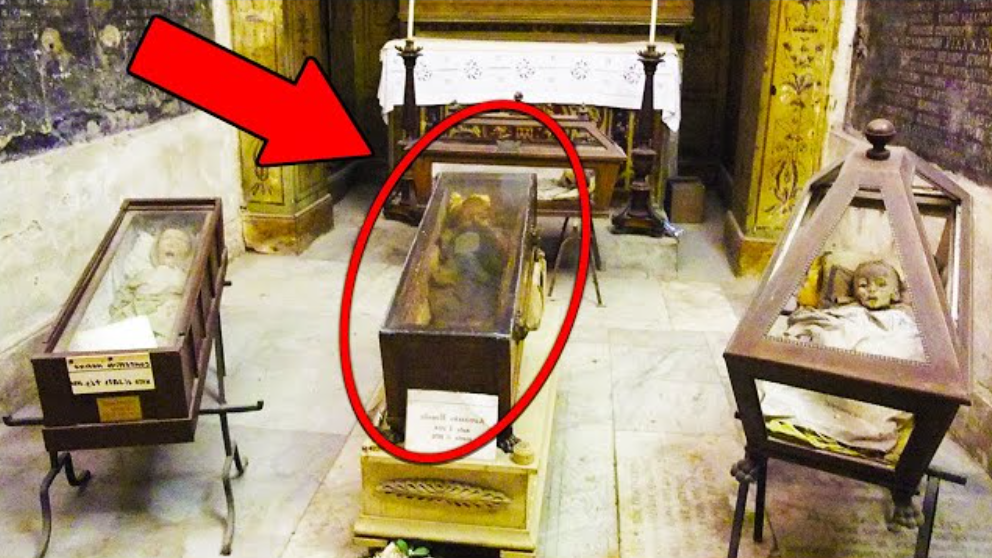
“Authorities in Mexico were in for the shock of a lifetime when they raided what appeared to be a simple home on the country’s border. They’ve received a tip that the house contained a secret Smuggler’s tunnel, but what they discovered when they investigated the home was truly shocking.

The house in question was located in Tijuana, Mexico, and the tunnel’s entrance was located behind a wardrobe door, of all things. The tunnel ran over a mile from the Mexican city into San Diego, California, and it provided a direct way for smugglers to transport illegal drugs. However, the tunnel entrance was so small that it left authorities baffled. How the heck did these smugglers get away with their illegal activities?
Despite the tiny entrance, the tunnel itself was actually a manageable size. It was three feet wide by five feet tall and allowed for plenty of room for a person to move through. And even though the entrance was smaller and involved a perilous climb, this didn’t seem to stop the smugglers from using it.
Where’s the exit of the tunnel in San Diego was a hole small enough that it could be concealed by a simple garbage can. The tunnel led to the back of a pallet warehouse, which was not unusual. Smugglers often buy legitimate businesses to disguise their real money-making ventures.
Now that the tunnel had been found, the authorities needed to catch the men running the operation. So, the authorities waited. At one point, they spotted a truck leaving the pallet factory. It was headed toward a location in central San Diego.
They watched as the truck was loaded with boxes, and when the moment was right, they took action. They were right to do it.
The boxes in the truck were full of drugs. Inside the truck, the authorities found an impressive market of illegal narcotics. In total, it contained one ton of cocaine and more than seven tons of marijuana. This was not the largest tally of illegal drugs ever confiscated by authorities, but it was still a substantial amount.
Now it was time to question these suspected smugglers and other potential guilty parties. Authorities arrested six people in relation to the bust. They arrested one American, two Cubans, and three Mexicans. In major busts like that, it was common to find people on either side of the border who were involved in the crime.
The Border Patrol eventually released photographs of the smugglers’ tunnel along with details of its construction. Authorities could not believe just how elaborate the tunnel really was. It had electricity, ventilation, and even water pumps in case of flooding.
What made all of this even more remarkable was that it was all done without the aid of machinery. It was dug out by hand. For months, this tunnel served as an effective way to transport tens of millions of dollars worth of illegal drugs without any authorities being any wiser.
The busy location of the San Diego warehouse and the hidden entrance in the wardrobe in Tijuana made locating them almost impossible. Believe it or not, tunnels like this one are more common on the border than you might think. Since 2006, authorities have found 13 similar tunnels.
While police were monitoring the pallet warehouse in San Diego for a full year before they made their bust, there’s no challenge just how long this tunnel had been used for. For all authorities know, it could have been one of the tunnels used by the infamous escape artist and drug dealer, El Chapo.
El Chapo, or Joaquín Guzmán Loera, the Mexican drug lord, also known as El Chapo, used well-constructed tunnels as a key part of his operation. In 2014, authorities released photographs of the tunnels he used to escape from his many hideouts.
They were nothing short of ingenious. El Chapo and his men were so skilled at making these tunnels that he was even able to escape his prison cell using one. El Chapo escaped prison through a tiny hole hidden within his shower cell. The tunnel led to a motorcycle that was modified to run on a track. Traveling it brought El Chapo to the outside of a warehouse about a mile away.
El Chapo was eventually captured again, but not before he did a little more business on the outside. Sophisticated tunnels like the one El Chapo used to escape are becoming more common among drug smugglers. In 2013, authorities located what they called a super tunnel. It ran the length of six football fields and had reinforced walls, lighting, ventilation, and another automated track system for easy transport.
Tunnels like these are not cheap to construct. They can cost hundreds of thousands, even millions of dollars. However, the cost is usually more than worth it. All it takes is one successful shipment of drugs, and the tunnel pays for itself.
The tunnels have other uses too. They can be used to help provide passage for illegal immigrants. In 2016, authorities found a 380-mile-long tunnel that ran from Mexico to a restaurant in California. The tunnel was large enough in size that people trying to flee Mexico could have made it through. Theoretically, immigrants using these tunnels could be transporting drugs in exchange for their passage.
Authorities have discovered 115 tunnels connecting Mexico and the United States since 1990. Only 11 of these tunnels were discovered prior to the attacks on September 11, 2001. The upgraded security measures after those attacks left drug traffickers with no other alternatives besides digging tunnels or giving up their trade.
New US sanctions have made the use of these tunnels to transport drugs and goods even more difficult than before. For every completed tunnel that’s discovered, authorities are able to find and shut down the construction of two more unfinished ones.
Tunnels are not the only way that people have tried to transport drugs and people from Mexico into the United States illegally. Border Patrol officials have found people hidden inside cars, the backs of trucks, and even among livestock.
In an effort to stop immigrants and drugs from entering the country illegally, US President Donald Trump proposed the building of a wall on the border of Mexico and the United States. His wall would cost more than 20 billion dollars to build and seems unlikely to deter people from digging tunnels or employing ladders.
So, how do we effectively prevent the illegal drug trade and cut back on unauthorized immigration? The best option seems to involve putting a stop to the Americans involved in both practices.
Without help from within the country, neither practice will be possible. Isn’t it crazy the lengths people will go to in order to make a buck? Hopefully, authorities will continue to deter and catch criminals on either side of the border.”




